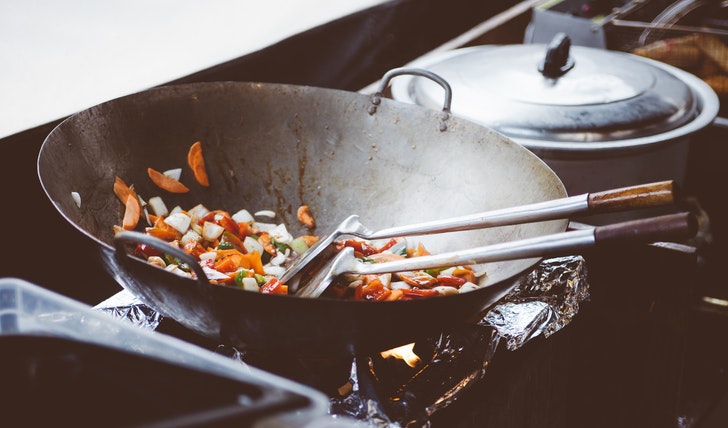
Here’s How a Man “Almost Lost His Life” Because of Eating

We recently saw a 2021 research project on a man in a shocking turn of events. He has suffered from organ failure and has had several amputations. The reason is, consuming leftover food. This case got a lot of attention within the last week, courtesy of TikTok. It further raised doubts on how to prevent a similar result. According to Randy Worobo, a researcher in nutrition and dietetics at Cornell University, a situation like this is extremely uncommon, says Worobo.

Cottonbro / Pexels / Leftover foods rarely cause major damage to the body’s vital organs.
“This is a very, extremely unusual thing,” he added. “There seem to be numerous other sorts of foodborne infections that happen which are less serious. But I assume that a clostridium perfringens developed in his leftovers depending on the statement.”
How Did It Happen?
It is the kind of virus that most usually triggers food poisoning. Toxins produced by that bacterium can enter the bloodstream and enter the cerebrospinal canal, triggering death and disease. Maybe the ramen wasn’t properly refrigerated within that man’s instance.
Maybe there was a very long wait between which he made the food and consumed it. Worobo says that something went horribly wrong even while preparing meals is improbable. Many components in the United States are significantly less likely to be the source of foodborne illnesses. That is since they are controlled either by the Food and Drug Administration or the USDA. Municipal public health authorities check the eateries.
How Can We Avoid Such Incidents?

Federica / Pexels / 41 degrees or slightly lower temperature is suitable for refrigerating leftover food.
If you observe these 3 basic principles, you will have a substantially lower risk of contracting a foodborne illness. People should watch the condition of their freezers. That is because a lot of people have a refrigerator that seems to be hotter than they otherwise would be. The right temperature is 41 degrees or lower. 3 days as that of the threshold for folks who are unsure if the leftover is safe for human consumption, but he believes that’s on the “cautious” side.
They can also inspect food for signs of decomposition. Signs can include odors or mold, which indicate that they should be discarded. “Nutrient-dense” foods such as meat, poultry, and shellfish are more prone to spoilage. That is because their pH is more hospitable to bacteria.
What’s The Risk?

Clem / Pexels / Whenever you eat certain items, the microorganisms in the gastrointestinal tract continue to proliferate. This results in an infection.
Although organ damage, including mutilations is extremely unusual for the normal individual, people can become ill from foodborne illness. Worobo underlines that the key to preventing it is to observe the three laws. These include proper preparation, appropriate chilling, and correct thermal treatment. The majority of foodborne illnesses are associated with the consumption of food contaminated with particular viruses or bacteria.
Food products also can cause you to get sick if they include poison or toxins. The bacteria that thrive in food cause these toxins. A variety of germs can cause food poisoning. Every year, millions of people become ill as a result of foodborne illnesses. People confuse food poisoning signs frequently with a stomach virus. Many persons with such a minor case believe they are immune.
More inHealthy Trends
-
`
Are Press-On Nails Worth the Hype?
Getting the perfect manicure often requires a hefty investment of both time and money. However, if you’re looking to achieve a...
January 3, 2025 -
`
How Intense Exercise and Appetite Are Surprisingly Linked
Balancing physical activity and hunger can be challenging, especially when maintaining a healthy lifestyle or managing weight. Exercise is known to...
December 26, 2024 -
`
Our Brain: The Link Between Learning and Mindset
The brain is a complex organ that governs bodily functions but also shapes how we think and act. This interplay raises...
December 18, 2024 -
`
The Top 5 Benefits of Getting a Flu Shot
Getting a flu shot is more than skipping the sniffles. It protects your health in a big way. The flu vaccine...
December 13, 2024 -
`
How to Maximize Electronic Bike Health Benefits While Staying Safe
Electronic bikes, or e-bikes, offer an innovative way to enhance fitness while reducing the strain of traditional cycling. The health benefits...
December 6, 2024 -
`
Rakuten and L’Oréal Japan Team Up for Personalized Beauty Tech
Rakuten and L’Oréal Japan have joined forces to revolutionize the beauty industry through personalized technology. The collaboration combines Rakuten’s AI capabilities...
December 6, 2024 -
`
Princess Charlotte Steps Up with a Royal Reminder for Prince George
Princess Charlotte continues to captivate royal watchers with her poised demeanor and sense of responsibility. At just nine years old, she...
November 29, 2024 -
`
Deal With Lower Back Pain With These Yoga for Sciatica Exercises
Lower back pain can disrupt daily life, especially when caused by sciatica. This condition occurs when the sacral nerve, located at...
November 29, 2024 -
`
8 Expert Tips for Staying Healthy in the Winter
Staying healthy in the winter requires a proactive approach, as cold weather can challenge immune strength and mental well-being. With a...
November 21, 2024















You must be logged in to post a comment Login